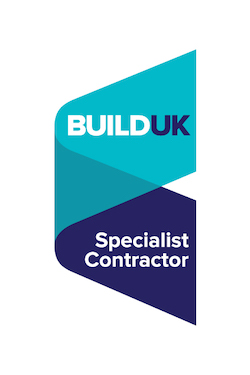Commercial Kitchen Hygiene And Design.
Your commercial kitchen hygiene is vital, now, more than ever with the outbreak of COVID-19. Nothing in your kitchen should compromise the safety of your food, your staff and your customers.
So, when designing a commercial kitchen your commercial kitchen design team should ensure that hygiene is considered from the very start of the project – luckily today there are several design features that will increase hygiene, reduce cleaning times and limit chemical exposure plus, improve your kitchen efficiency.
No matter what type of kitchen you run, taking the following design features into consideration during the design process will make sure it is truly hygienic – allowing you peace of mind that your workforce and customers are safe and that you adhere to all government health and safety guidelines.
Creating seamless food prep areas and one-piece top cook suites
Food, fat, grease, flour and liquids can get lodged in gaps and in between and behind equipment which can be a breeding ground for bacteria and bugs, by creating a commercial kitchen with fully seamless food preparation areas will help to overcome this issue.
The ideal design is to have a fully bespoke cook suite with a one-piece stainless steel top which immediately removes any gaps where dirt can become trapped. Quite often a bespoke cook suite can be quite costly from leading suppliers but there are alternative solutions that are cost-effective or clever options to help you achieve a seamless cooking environment. These include:
- Modular equipment and one-piece tops – your commercial kitchen design team should be able to source modular equipment that is compatible with a one-piece top.
- Infilling and sealing equipment – Where any equipment stands off from the wall (gas, electric and waste) utilise an infill, this further prevents dirt traps and reduces cleaning time behind equipment.
Hygienic Flooring and Raised Equipment
Commercial kitchen floors are the perfect place for pests and bugs at the end of a shift you will inevitably find spills and splashes of liquids, food and fats in almost all areas – it’s just how it is and it can’t be helped! Raising your equipment including cooking suites and preparation counters on a plinth and coving your flooring will stop any pests and dirt from getting under the equipment plus remove the risk of poor hygiene.
Your commercial kitchen design team will be able to advise the best options to create this type of flooring, we have a few suggestions below;
- Concrete is a great solution but due to its solid-state when set it does require a lot of careful planning for electric, gas, water and waste outlets. Once it’s down, it’s down and there can’t be any changes – so your design team will need to work with you to ensure you have services access in just the right spot.
- The other option, which could be considered slightly less hygienic, is to use a hollow plinth of steel or stud-work. If you use this method with a concrete coved floor, as above, this will stop any dirt or pests getting into any nooks or crannies that might be exposed if used on its own.
Your flooring should be anti-slip, easy to clean and hardwearing, a seamless Epoxy resin solution should last for many years and is one of the most hygienic options, and, because they are seamless and easy to clean they do not require the use of any harsh chemicals.
Cooking Equipment
Many commercial kitchens favour more traditional gas cooking appliances but these can be time-consuming and difficult to clean due to all the components that need to be removed during the cleaning process. A hygienic solution is to use induction cooking equipment that can be seamlessly integrated into your surfaces and it has no retained heat. This solution allows chefs to clean as they go reducing any burnt-on food or build-up of carbon on the pans and cooktops.
Induction cooking equipment also uses less energy which will have an impact on your overheads – the other benefit is that it reduces ambient heat in the kitchen meaning a more comfortable working environment for all.
Refrigeration
We all know how time-consuming cleaning refrigeration systems can be and quite often the mechanical parts of refrigeration systems are overlooked, meaning there can be a build-up of bacteria and dirt. A good option for a more hygienic refrigeration system is to use remote refrigeration packs that have minimal mechanical parts, reduce space and cleaning times as well as adding to reduced ambient heat in the kitchen.
Hand washing & Sanitisation
An essential part of keeping COVID-19 at bay is hand washing and sanitising. A kitchen needs to have enough essential handwashing stations positioned throughout to improve kitchen hygiene.
There a few considerations for taps that can be used in your commercial kitchen:
- Infrared taps
- Knee operated hand washbasins
- Elbow operated taps
Finally, mobile hand wash and sanitisation areas should be placed throughout your establishment for staff and customers to ensure you are meeting and are committed to being a COVID safe environment.
If you are considering a new commercial kitchen installation and want to discuss all the options to ensure you have a hygienic kitchen design please do get in touch.

























